
Disha Gupta


From recruiting the right people to ensuring teams have the systems they need to be productive, HR is critical to achieving business objectives.
The right tech stack enables HR teams to be more productive and efficient and empowers all employees with the self-service tools they need to request time off, manage performance, change benefits, and more — and the positive impact of HR transformation is felt throughout the entire organization.
To drive the most value from your HR technologies like HCM software or HRIS systems, you must enable your end-users with a contextual digital adoption plan.
In this article, we’ll explore the key challenges of HR software adoption and break down how you can enable your HR admins, people leaders, and individual employees with the assistance and support they need to adopt these technologies fully.
Technology supports HR teams in streamlining everything from recruitment to performance management. With the right tech stack, including application tracking systems (ATS), learning management systems (LMS), and core HCM systems, HR professionals can make data-driven decisions and deliver a superior employee experience powered by self-service features.
High technology adoption rates are vital to getting the total value of HR platform investments. HR teams become productive, enabling them to support other teams and individuals across the organization in driving efficiencies. Ultimately high end-user adoption drives HR business outcomes – all powered by HR technology investments.
An HR tech stack helps improve productivity across the organization. Here are a few of the key areas where technology supports the HR function:
HR software has the potential to boost productivity and improve efficiencies company-wide — but implementing new technologies can pose several challenges, including:
Selecting the right HR technology solutions requires understanding your organization’s specific needs, both as they are today and what they could grow into as your team develops. Tools must also be compatible with existing systems and fit within your budget. Finding the right solutions requires researching, collaborating, and investing time and energy into finding a tool that checks all your boxes.
The Select Group Enabled Its Recruiters and Accelerated ATS Transformation With Whatfix
Resistance to change is relatively common when it comes to technology. Employees are accustomed to a particular way of doing things and will be apprehensive about learning new tools and digital workflows. Prioritizing change management efforts and providing clear communication and high-quality training programs can promote successful adoption.
Even with thorough training, end-users will likely encounter difficulties or questions when using the new software. Providing contextual end-user support within the application can provide in-app guidance and assistance tailored to the user’s specific needs or situation.
With a digital adoption platform (DAP) like Whatfix, HR and IT leaders are empowered with a no-code Visual Editor to create in-app guidance and end-user support inside their HCM, ATS, and other HR applications. This provides contextual assistance and moment-of-need help for end-users working through custom HR workflows.
For example, see Whatfix on SAP SuccessFactors below to understand how employees are enabled with a real-time “Self Help” center that provides a repository of people-related processes and company knowledge – all connect to in-app experiences that can prompt step-by-step guidance when users select an entry or can link to an external resource.
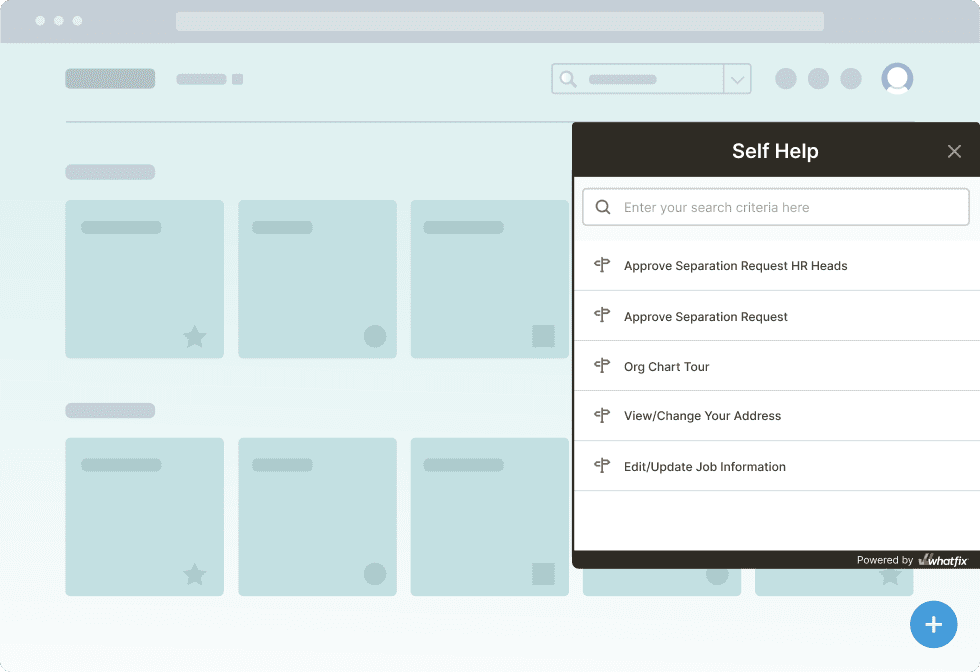
With Whatfix, enable your HR technology end-users with:
Software clicks better with Whatfix's digital adoption platform
Enable your employees with in-app guidance, self-help support, process changes alerts, pop-ups for department announcements, and field validations to improve data accuracy.
With the increase in digital HR processes and online information management systems, it’s more important than ever to ensure sensitive employee data is kept safe. HR systems need to comply with data protection regulations and should have robust security measures to prevent data breaches and unauthorized access. This can include choosing tools with features like encryption and access controls and making sure your team is adequately trained on data privacy best practices.
If you already have established IT infrastructure and legacy systems, your new software and technology must integrate seamlessly. A seamless connection is critical to ensuring data consistency and avoiding workflow disruptions. Compatibility issues can make it harder for your HR team to work productively, leading to errors and inefficiencies.
Driving enterprise HR technology adoption requires a strategic approach to implementing the right tools and fostering a change-centric culture. Here’s how to build an adoption strategy for enterprise HR technology:
Integration of HR technology should be an enabler of organizational goals rather than just an operational necessity. HR leaders should work closely with other business stakeholders to ensure the tools being introduced align with the specific objectives and goals of the organization. Connecting HR technology with bigger business goals can make getting buy-in from key stakeholders easier.
Traditional employee training methods should only scratch the surface when implementing new HR technology. Enhance user proficiency and confidence by offering contextual training resources directly within your HR applications with Whatfix. This can include interactive tutorials, tooltips, self-help resource centers, and other forms of on-demand guidance or support.
In the example below, you can see a new user tour of Workday HCM created with Whatfix. It welcomes new Workday users when they first log in and provides a quick walkthrough of core features to know and where to find essential tasks in the platform – like updating your personal information, finding company announcements, viewing your time-off, checking paystubs, finding the org chart, and more.
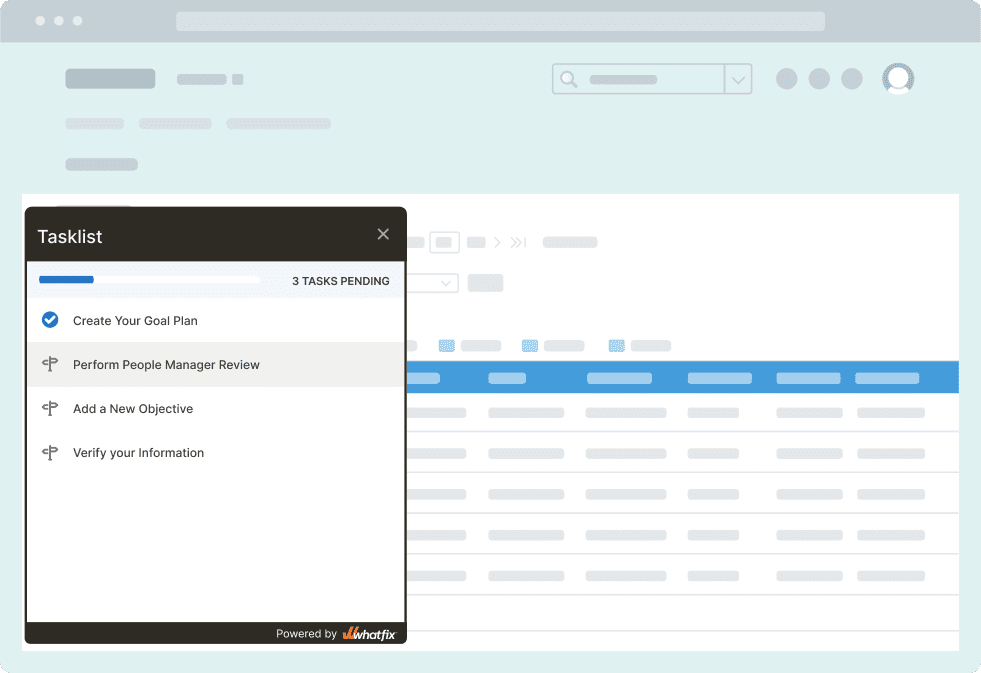
Sentry Insurance invested in Whatfix to support its Workday end-users and drive adoption of its new HCM platform. With Whatfix, Sentry created in-app, contextual Workday end-user onboarding experiences and moment-of-need assistance and support inside the application. Within a few months of implementation, Sentry was already deflecting HCM-related support tickets, reduced the time needed to create training material by 40%, and drove Workday business outcomes.
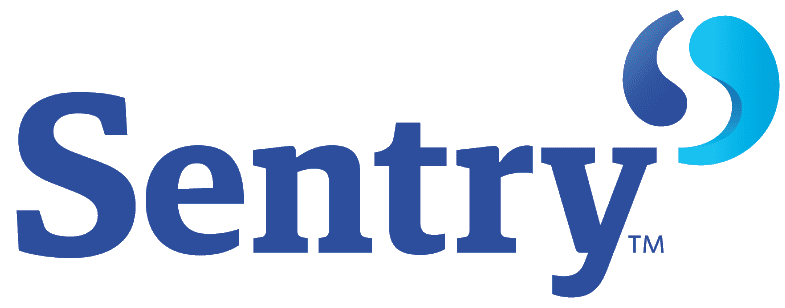
Colleen Behnke, Learning and Performance Specialist, Sentry Insurance
Effective communication is key to gaining buy-in and fostering enthusiasm for new technology. Clearly articulating the benefits of your new tool can get critical stakeholders on board with the changes. Communication efforts should emphasize how the new technology will improve efficiency, enhance decision-making, and contribute to a better overall employee experience.
You should also provide contextual guidance and support for your HR technology end-users when they are required to complete infrequently done tasks, like completing their performance reviews or enrolling in benefits – each only done one or twice a year.
With Whatfix, provide in-app alerts with Pop-Ups to drive awareness of upcoming deadlines and include a CTA to the process to improve competition rates. You can see an example of Whatfix on UKG Pro HCM for improving performance review completion rates.
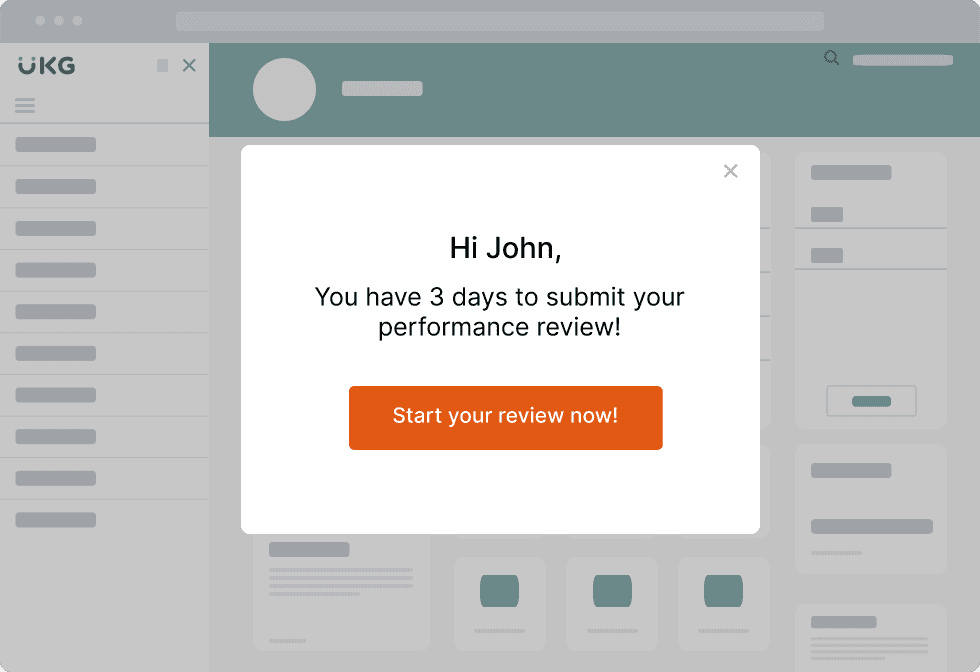
You can also walk employees step-by-step through these processes to reduce dropoffs and improve compliance. For example, again see Whatfix on UKG, but this time for guiding employees through the benefits review process.
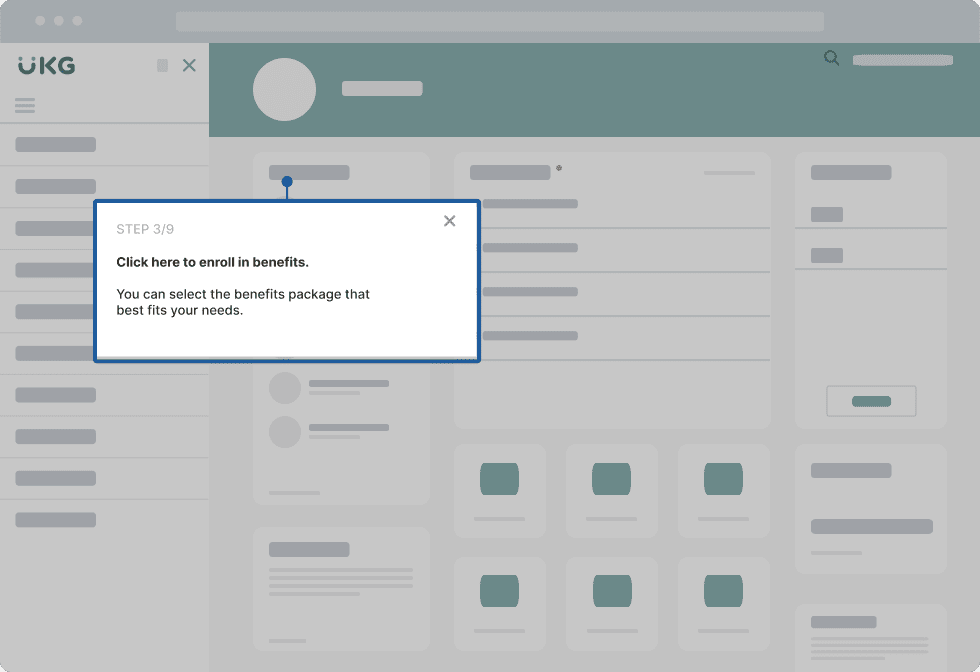
Identifying and empowering internal change agents willing to advocate for the new technology can help get other team members excited and improve adoption rates. Change champions can also provide additional guidance and support throughout the transition to the new tool.
Measure the impact of new technology initiatives to demonstrate value and build momentum. Show off quick wins and provide insights into how your new tools are helping your team achieve KPIs in the short and long term. This might include tracking metrics like employee productivity or time saved. Sharing employee success stories can also go a long way in boosting confidence.
Data privacy and security are top concerns in today’s digital landscape. Employees need to know how to secure critical information, especially as they get familiar with new platforms and programs. In addition to using tools that have built-in security measures, provide comprehensive training on things like password sharing, regulatory standards, and other security concerns.
Actively seek end-user feedback to identify pain points and gather suggestions for improvements. Establish channels of communication to collect feedback proactively, but also offer opportunities for users to share concerns or ideas as they arise. Surveys, focus groups, one-on-one interviews, and polls are all great ways to stay connected with end users so they can share their ideas and experiences.
With Whatfix, collect end-user feedback with in-app surveys. Build and launch surveys that meet brand guidelines with a no-code editor and collect feedback at key moments, like after an onboarding flow or training experience, or collect general feedback like eNPS.

End-user behavior analytics and usage patterns provide valuable insights into HR technology adoption and how end-users are engaging with them. This data empowers teams to identify areas of user friction, issues with usability, or opportunities to optimize workflows. A data-driven approach can improve and refine your workflows and your end-user experience.
With Whatfix, track any custom user action or event to identify end-user friction and dropoff points, map user journeys, build user cohorts, and more. Overcome these trouble spots or optimize workflows with new in-app guidance or support content using Whatfix’s Visual Editor.
A digital adoption platform like Whatfix supports your team throughout the HR technology adoption process and beyond. With a comprehensive adoption tool, enable your end-users with:
See how Whatfix can drive HR technology adoption by requesting a free demo.

Thank you for subscribing!